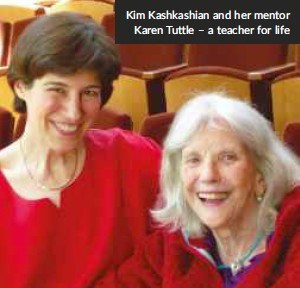
When telling violist friends some time ago that I was going to attend a workshop to familiarise myself with the pedagogic methods of Karen Tuttle, I was invariably met by perplexed faces. It became obvious to me that her name is nowhere near as well known in Europe as it should by rights be. Conversely, it appears on the résumé of every other American violist, since she formed generations of players in the US during a teaching career that lasted six decades. Furthermore, during that workshop, and in many conversations with former students of hers, I came to realise that Tuttle did much more than teach people how to play the viola to the highest standard: her students unanimously feel that she also helped them grow as people and inspired in them a sense of collegial supportiveness. Kim Kashkashian considers her a ‘mentor’ – rather than a teacher – with whom she studied ‘until the day she died’, and told me that even today she continues to learn from her memories of Tuttle. Students of Tuttle tend to speak of themselves as a ‘family’; in a moving tribute to her teacher, Carol Rodland (currently on the Juilliard School faculty) has said that she counts some of her Tuttle ‘siblings’ among her ‘closest friends and most cherished colleagues’. Katherine Ann Tuttle was born on 28 March 1920 in Lewiston, Idaho.
That she summarily changed a given name she didn’t like is typical of the resoluteness she showed throughout her life. Her father, who came from a family of farmers, was an able country fiddler, in demand at balls and weddings, and her mother, a schoolteacher with an attractive singing voice, directed the local church choir. When Karen was twelve, the family moved to Walla Walla, Washington. A couple of years later, at the end of eighth grade, the girl announced she no longer wished to attend school, finding its authoritarian discipline insufferable. Her parents agreed, on condition that she spent the same amount of time doing something that she liked, whereupon she expressed her wish to learn the violin.